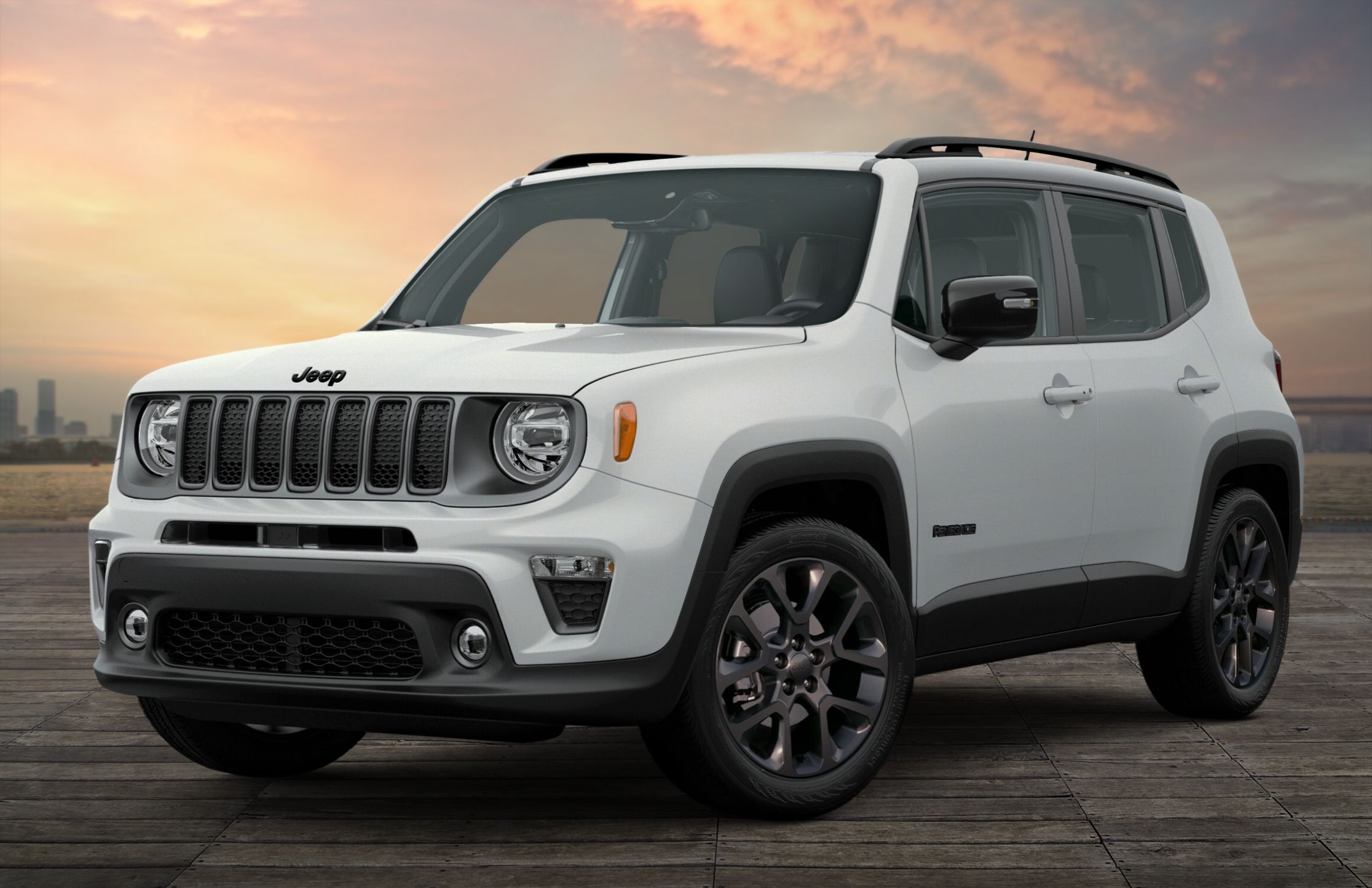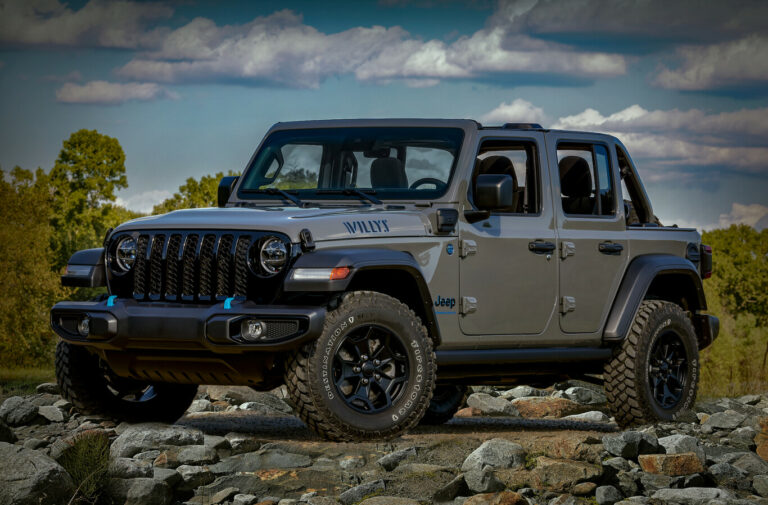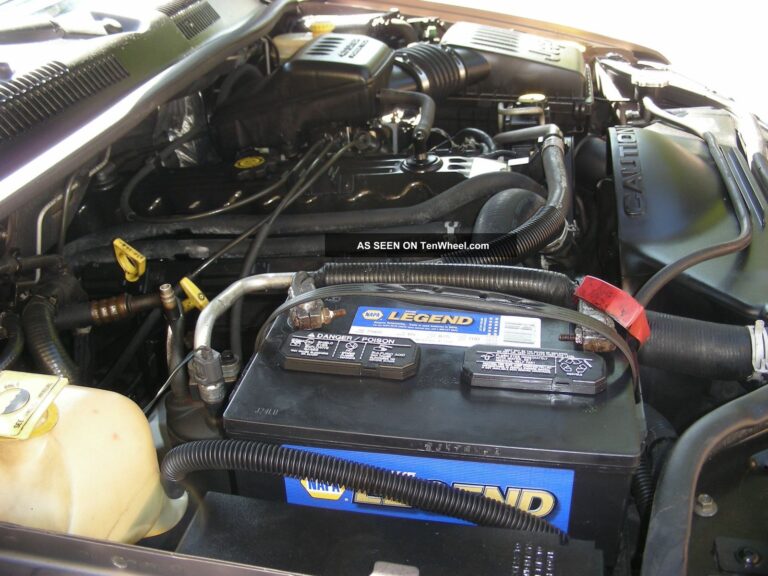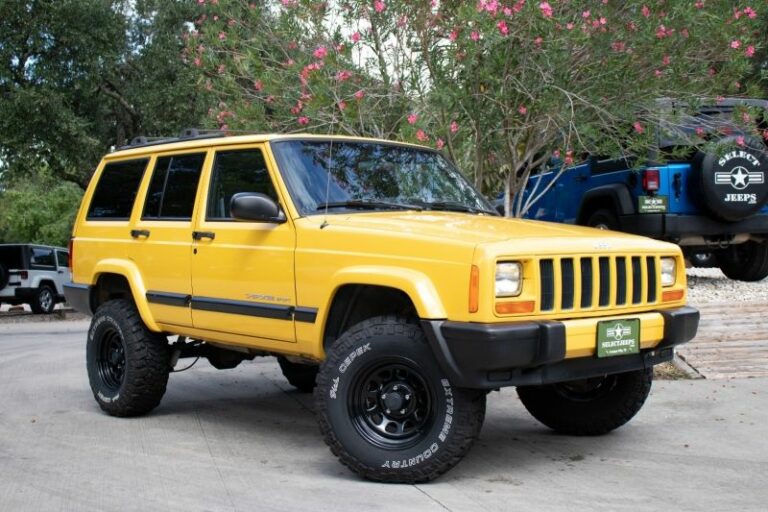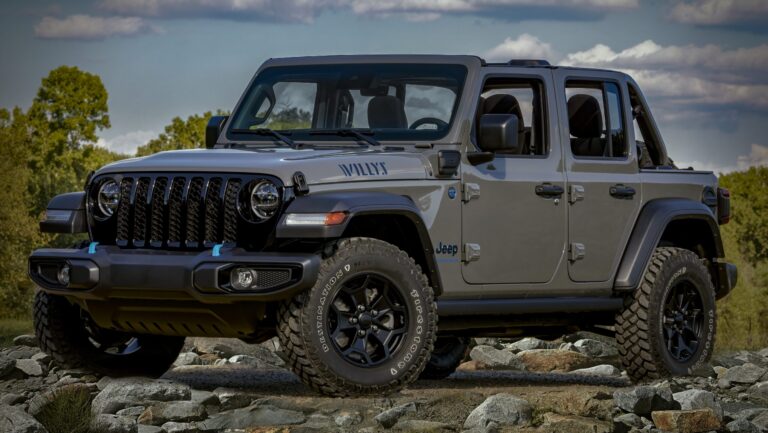Jeep Dana 44 Rear Axle For Sale: Your Ultimate Guide to an Essential Upgrade
Jeep Dana 44 Rear Axle For Sale: Your Ultimate Guide to an Essential Upgrade jeeps.truckstrend.com
For any serious Jeep enthusiast, the phrase "Dana 44" often conjures images of robust strength, unwavering reliability, and enhanced off-road capability. The Dana 44 rear axle is not just a component; it’s a foundational upgrade for many Jeep models, signifying a significant leap in durability over factory-equipped lighter-duty axles. Whether you’re looking to conquer more challenging trails, accommodate larger tires, or simply fortify your rig for peace of mind, acquiring a Jeep Dana 44 rear axle for sale is a pivotal step. This comprehensive guide will navigate you through everything you need to know, from identifying the right axle to understanding its value and ensuring a successful installation.
Why the Dana 44 Rear Axle is the Gold Standard for Jeeps
Jeep Dana 44 Rear Axle For Sale: Your Ultimate Guide to an Essential Upgrade
The Dana 44 axle has earned its legendary status in the off-road community for good reason. Compared to its smaller counterparts, like the ubiquitous Dana 35 found in many stock Jeeps, the Dana 44 offers a substantial upgrade in strength and resilience.
- Superior Strength and Durability: The Dana 44 boasts a larger ring and pinion gear, stronger axle tubes, and often, larger axle shafts (typically 30-spline versus 27-spline in a Dana 35). This translates directly into a higher torque capacity and greater resistance to bending or breaking under strenuous off-road conditions, especially when running larger tires or tackling aggressive terrain.
- Enhanced Aftermarket Support: The popularity of the Dana 44 means there’s an extensive ecosystem of aftermarket parts available. From various gear ratios and locking differentials to heavy-duty axle shafts and reinforced covers, customization options are virtually limitless, allowing you to tailor your axle to your specific needs.
- Increased Versatility: With the ability to handle a wide range of tire sizes (up to 37-inch with proper reinforcement) and a multitude of locker options, the Dana 44 provides the versatility needed for diverse off-roading styles, from rock crawling to high-speed desert runs.
- Improved Resale Value: Investing in a Dana 44 axle not only enhances your Jeep’s performance but also adds significant value. It’s a highly sought-after modification that signals a well-built and capable vehicle to potential buyers.
For these reasons, searching for a "Jeep Dana 44 rear axle for sale" is a common quest for those looking to serious about their Jeep’s capabilities.

Identifying the Right Dana 44 for Your Jeep Model
Not all Dana 44s are created equal, especially when it comes to Jeeps. Compatibility is key, primarily revolving around axle width (wheel mounting surface to wheel mounting surface, or WMS-to-WMS), bolt pattern, and mounting bracket locations.
- TJ/LJ (1997-2006 Wrangler/Unlimited) Dana 44: These are highly sought after as a direct bolt-in upgrade for TJ/LJ owners who typically have a Dana 35. Factory TJ Dana 44s (found in Rubicons and some optional packages) often came with 30-spline axle shafts and disc brakes. Widths are specific to the TJ/LJ chassis.
- JK/JKU (2007-2018 Wrangler/Unlimited) Dana 44: Many JK Rubicons came with factory Dana 44s front and rear. Non-Rubicon JKs often had a Dana 44 rear axle as an option or standard on higher trims (though sometimes with 30-spline shafts vs. Rubicon’s 32-spline in the rear). These are wider than TJ axles and use a 5×5 bolt pattern.
- JL/JT (2018-Present Wrangler/Gladiator) Dana 44: The latest generation of Dana 44s, often branded as "Dana 44 AdvanTEK," features further refinements. These are the widest and use a 5×5 bolt pattern. Swapping these into older Jeeps requires significant modification.
- XJ/YJ/CJ Dana 44 Swaps: While some older CJs had Dana 44 rears, it’s less common to find them as direct bolt-ins for XJs or YJs. These often involve custom fabrication for mounting brackets, requiring more advanced installation.
When searching for a "Jeep Dana 44 rear axle for sale," always confirm the source vehicle to ensure compatibility with your Jeep’s generation and intended use. Measuring your current axle’s WMS-to-WMS is crucial.
Key Considerations When Buying a Used Dana 44 Rear Axle
The majority of "Jeep Dana 44 rear axle for sale" listings will be for used units. While cost-effective, buying used requires a meticulous inspection to avoid costly surprises down the road.
- Housing Integrity:
- Bends/Cracks: Inspect the axle tubes and the differential housing thoroughly for any signs of bending, cracks, or severe impacts. A bent housing can lead to premature wear on gears, bearings, and axle shafts.
- Rust: Surface rust is common and generally not an issue, but deep, pitting rust can compromise structural integrity. Pay attention to critical areas like welds and mounting points.
- Axle Shafts:
- Straightness: Roll them on a flat surface or use a dial indicator if possible to check for bends.
- Splines: Inspect the splines where they meet the differential and the wheel hub for twisting, wear, or damage.
- U-joint Yokes (if applicable): Check for play or damage.
- Gears and Differential:
- Ratio: Confirm the gear ratio. Look for markings on the ring gear or count teeth if possible. It’s vital that the front and rear axle gear ratios match if your Jeep is 4WD.
- Condition: Remove the differential cover if possible (or insist the seller does) to inspect the ring and pinion gears for pitting, chipping, or excessive wear. Check the differential itself for any play or damage to the carrier or spider gears (if open diff) or clutch packs/locking mechanism (if LSD/locker).
- Bearings: Check for excessive play in the pinion or carrier bearings.
- Brakes:
- Condition: Inspect rotors for warping or deep grooves, and calipers for leaks or seized pistons. While these are replaceable, their condition can give insight into how well the axle was maintained.
- Mounting Brackets:
- Condition and Alignment: Ensure all suspension mounting brackets (upper and lower control arm mounts, track bar mount, shock mounts) are present, intact, and correctly aligned for your Jeep model. Swapping an axle from a different model may require cutting off and welding on new brackets, adding to the cost and complexity.
- Fluid Condition:
- If the differential cover is removed, observe the gear oil. Milky fluid indicates water contamination; burnt smell suggests excessive heat or neglect. Metal shavings are a red flag.
- Source:
- Junkyard/Salvage Yard: Often the cheapest but "as-is." You’ll need to do a thorough inspection yourself.
- Private Seller: Can be a good deal if the seller is knowledgeable and transparent. Ask for photos, videos, and maintenance history.
- Specialty Off-Road Shops: Often more expensive but may offer rebuilt axles, warranties, or pre-inspected units, providing greater peace of mind.
New vs. Used Dana 44 Rear Axle: Pros and Cons
When considering a "Jeep Dana 44 rear axle for sale," you’ll encounter both new and used options. Each has distinct advantages and disadvantages.
Used Dana 44 Rear Axle:
- Pros:
- Cost-Effective: Significantly cheaper than new.
- Availability: More readily available from junkyards, private sellers, and online marketplaces.
- Cons:
- Unknown History: You don’t know how the axle was used or maintained.
- Potential Hidden Issues: Wear and tear, minor bends, or internal damage might not be immediately apparent.
- Additional Costs: May require new seals, bearings, brake components, or even gear sets, adding to the overall expense.
- No Warranty: Typically sold "as-is."
New Dana 44 Rear Axle (Aftermarket/Crate Axle):
- Pros:
- Guaranteed Quality: Brand new components, no wear and tear.
- Warranty: Most new axles come with a manufacturer’s warranty.
- Customization: Can be ordered with specific gear ratios, lockers, and heavy-duty components right from the factory.
- Bolt-In Ready: Often designed as direct bolt-in replacements with correct brackets and widths.
- Cons:
- Higher Cost: Significantly more expensive than a used axle.
- Lead Time: May require ordering and waiting for production.
Your budget and desired level of peace of mind will heavily influence this decision.
Installation Considerations and Professional Help
Installing a Dana 44 rear axle is a substantial undertaking that requires mechanical aptitude, specific tools, and attention to detail.
- DIY vs. Professional Installation:
- DIY: Possible for experienced mechanics with a well-equipped garage. You’ll need jack stands, a floor jack, wrenches, sockets, a torque wrench, and potentially a specialized tool for pressing bearings or setting gear backlash if you’re swapping components.
- Professional: Highly recommended if you’re not comfortable with automotive mechanics, especially axle work. A qualified shop will ensure proper installation, correct gear mesh, and alignment, preventing premature failure.
- Key Installation Steps (Simplified):
- Securely lift the vehicle.
- Remove wheels, brake components, driveshaft, and existing suspension links.
- Drain differential fluid.
- Remove old axle.
- Position new Dana 44, carefully aligning control arm mounts, track bar mount, and shock mounts.
- Reinstall suspension components, driveshaft, and brake lines.
- Bleed brakes.
- Fill differential with proper gear oil.
- Perform a test drive and check for leaks or unusual noises.
- Gearing Match: If your Jeep is 4WD, ensure the new rear axle’s gear ratio perfectly matches the front axle’s ratio. Failure to do so will cause severe drivetrain binding and damage when operating in 4WD.
- Driveshaft Length: A different axle may require a custom-length driveshaft.
- E-Brake Cables: Ensure the new axle’s brake system is compatible with your existing emergency brake cables, or plan for new ones.
Upgrading Your Dana 44 Rear Axle
Even a factory Dana 44 can be enhanced. If you find a "Jeep Dana 44 rear axle for sale" that’s a good base, consider these popular upgrades:
- Gears: Re-gearing to match larger tires or specific driving conditions (e.g., lower gears for rock crawling).
- Lockers/LSDs: Installing a full locker (like an ARB Air Locker or Eaton E-Locker) or a limited-slip differential (LSD) for improved traction.
- Chromoly Axle Shafts: Stronger than stock shafts, ideal for heavy abuse or larger tires.
- Trussing/Gussets: Welding reinforcement to the axle tubes and inner C’s (on front axles, but rear tubes can also be trussed) to prevent bending.
- Heavy-Duty Differential Cover: Offers greater protection for the differential housing from impacts.
Estimated Price Guide: Jeep Dana 44 Rear Axle For Sale
Prices for Dana 44 rear axles vary significantly based on condition, included components, Jeep model, and market demand. The table below provides estimated price ranges for common scenarios. These are rough guidelines and actual prices may differ.
| Axle Type (Jeep Model) | Condition | Included Components | Estimated Price Range (USD) | Notes |
|---|---|---|---|---|
| TJ/LJ Dana 44 | Used | Bare Housing (no gears/shafts) | $300 – $600 | Requires full rebuild, new shafts, gears, diff. Good for custom builds. |
| Used | Complete (shafts, gears, brakes) | $800 – $1,500 | Common junkyard pull. Condition varies widely. May need new bearings, seals, brake parts. Rubicon axles with lockers fetch higher prices. | |
| JK/JKU Dana 44 | Used | Bare Housing (no gears/shafts) | $400 – $800 | Wider than TJ. Good for custom swaps into other vehicles or building a specific axle. |
| Used | Complete (shafts, gears, brakes) | $1,000 – $2,500 | Non-Rubicon (Dana 44 rear, Dana 30 front) or Rubicon take-offs. Rubicon axles with e-lockers and 4.10 gears are at the higher end. Often includes disc brakes. | |
| JL/JT Dana 44 | Used | Complete (shafts, gears, brakes) | $1,500 – $3,500+ | Latest generation, often from wrecked vehicles. Wider, typically 3.73/4.10/4.56 gears. Limited availability in used market. Higher end for Rubicon axles with lockers. |
| Aftermarket Dana 44 | New | Crate Axle (complete, configured) | $3,000 – $6,000+ | Brand new, built to spec (gears, locker, shafts). Examples: Dynatrac, Currie, G2. Ready to bolt in. Prices vary significantly based on options (chromoly, locker type, etc.). |
| Rebuilt Dana 44 | Rebuilt | Complete (fully refurbished) | $2,000 – $4,000 | Professionally rebuilt units from specialty shops. Often come with a warranty. Better than used, less than new. |
Disclaimer: These are approximate prices as of late 2023 / early 2024. Actual prices are subject to change based on market demand, location, seller, included components, and the overall condition of the axle.
Frequently Asked Questions (FAQ) about Jeep Dana 44 Rear Axle For Sale
Q1: What’s the main difference between a Dana 35 and a Dana 44 axle?
A1: The Dana 44 is significantly stronger than the Dana 35. It features a larger ring and pinion gear, a larger differential case, stronger axle tubes, and typically 30-spline axle shafts (vs. 27-spline for the Dana 35). This allows the Dana 44 to handle more torque, larger tires, and more aggressive off-roading without breaking.
Q2: Can I swap a JK Dana 44 rear axle into my TJ Wrangler?
A2: Yes, but it’s not a direct bolt-in. JK Dana 44s are considerably wider than TJ axles and use a different bolt pattern (5×5 vs. 5×4.5). The mounting brackets will also be different. The swap requires custom welding for new suspension mounts, potentially new wheels, and a custom driveshaft, making it a more involved and costly project than swapping a TJ Dana 44 into a TJ.
Q3: How do I determine the gear ratio of a Dana 44 axle?
A3: The easiest way is often to look for a tag on the differential cover bolts or stamped into the axle tube. If no tag is present, you can remove the differential cover and count the teeth on the ring gear and the pinion gear, then divide the ring gear teeth by the pinion gear teeth (e.g., 41 ring teeth / 10 pinion teeth = 4.10 ratio).
Q4: Is a factory Jeep Dana 44 strong enough for 37-inch tires?
A4: A factory Dana 44 can technically run 37-inch tires, but it’s generally considered the absolute limit without further upgrades. For aggressive off-roading with 37s, it’s highly recommended to upgrade to chromoly axle shafts, add a heavy-duty differential cover, and potentially truss the axle housing for added strength.
Q5: What’s the average cost of professional installation for a Dana 44 rear axle?
A5: Installation costs vary widely by region and shop, but typically range from $600 to $1,500, not including the cost of the axle itself. This usually covers removing the old axle, installing the new one, connecting brake lines, and filling with fluid. If gear setup or welding of brackets is required, the cost will be higher.
Q6: Should I buy a bare Dana 44 housing or a complete axle?
A6: If you’re on a tight budget or plan to fully customize the axle (new gears, locker, shafts), a bare housing might be a cheaper starting point. However, if you want a quicker, more straightforward installation and don’t plan extensive internal modifications immediately, a complete axle (even used) is generally more convenient, as it includes shafts, gears, and brakes. Always factor in the cost of new bearings and seals for a used complete axle.
Conclusion
Finding the right "Jeep Dana 44 rear axle for sale" is more than just a transaction; it’s an investment in your Jeep’s performance, durability, and your peace of mind on the trail. By understanding the different types, knowing what to look for when buying used, and planning for proper installation and potential upgrades, you can confidently acquire this cornerstone component. A Dana 44 rear axle will undoubtedly transform your Jeep into a more capable and reliable off-road machine, ready to tackle whatever challenges lie ahead. Choose wisely, inspect thoroughly, and get ready to experience the true potential of your Jeep.
